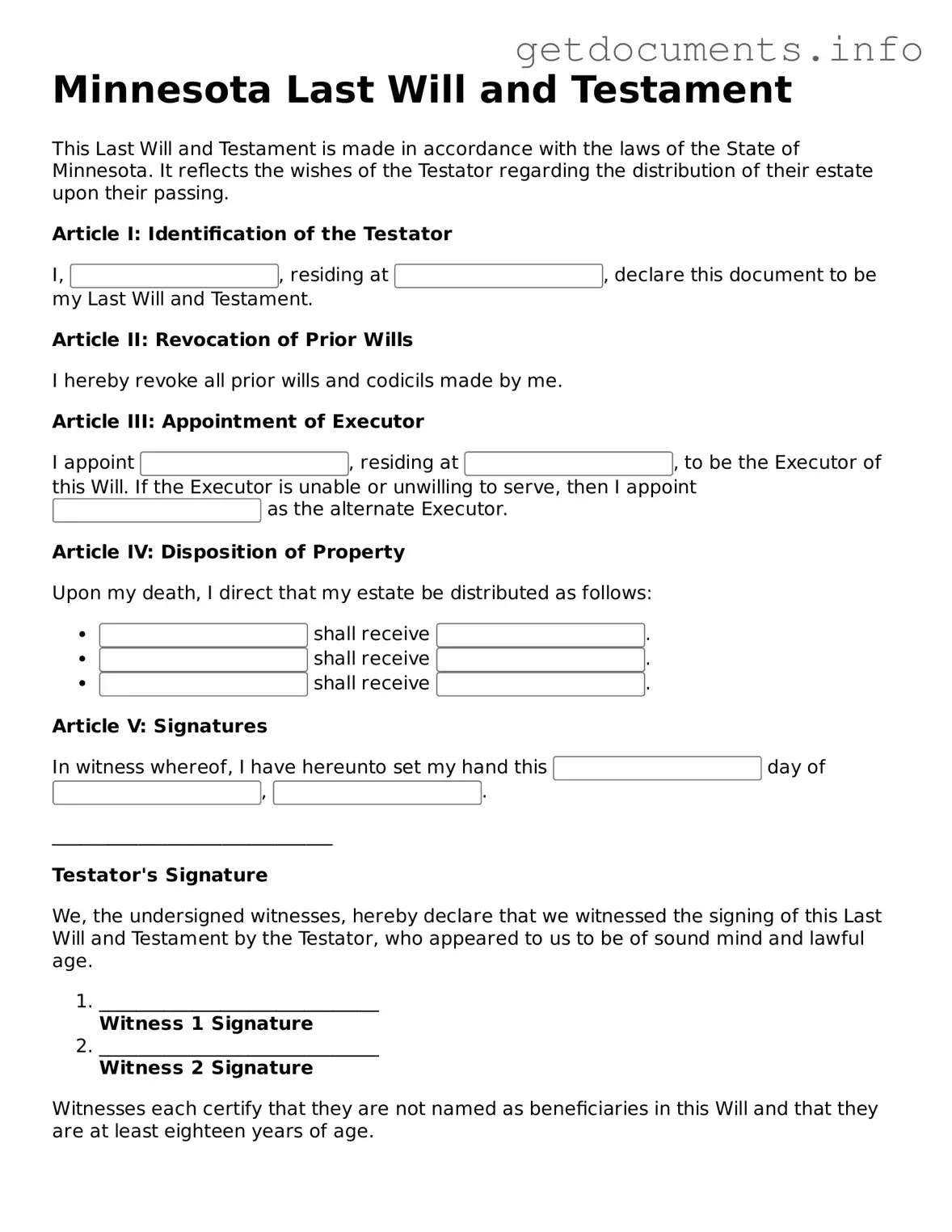Creating a Last Will and Testament is an essential step in ensuring that your wishes are honored after your passing, and in Minnesota, the process is streamlined through a specific legal form designed to meet state requirements. This form allows individuals to outline their final wishes regarding the distribution of assets, the care of dependents, and the appointment of an executor to manage the estate. Notably, the Minnesota Last Will and Testament form requires the testator— the person making the will— to be at least 18 years old and of sound mind. Furthermore, the will must be signed in the presence of two witnesses, who also need to sign the document, thereby affirming its validity. This form can also incorporate various provisions, such as guardianship for minor children and specific bequests, which allow individuals to tailor their wills to reflect personal circumstances and desires. Understanding these key aspects not only aids in the effective creation of a will but also underscores the importance of having a legally sound document to avoid disputes and ensure peace of mind for both the testator and their loved ones.
